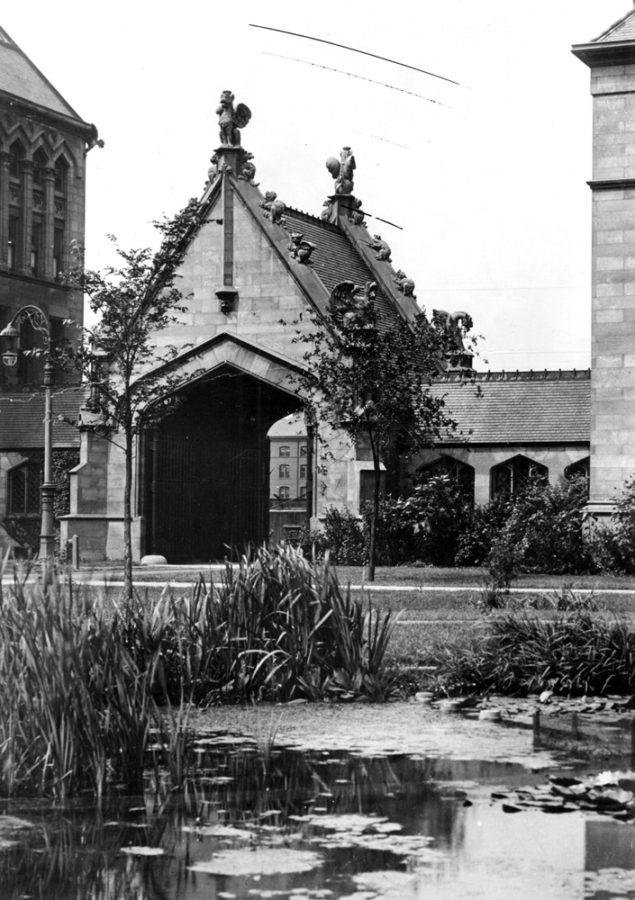A danger abounds on campus. It speeds around in all directions, racing to and fro, hunting the weak, slow, and defenseless, and forever endangering the kindly bipedal community of the University. It stalks its unwitting prey, creeping behind and beside and pouncing when attack is least expected; it clacks its fierce metallic teeth and charges at students, clicking its gears menacingly.
I speak, of course, of bicycles. A great number of students, faculty, and staff make use of bicycles as means of transportation, utilizing the devices’ easy efficiency to crisscross campus in fractions of the time required were they left to their legs alone. They zoom through the quads without care or caution, stampeding into frightened bystanders who linger in the bicycles’ predestined paths. They pay no heed to the real-time passage of the scurrying masses; they rarely ring bells and never brake lest the crowds be warned of their deadly presence. They carry dents left by squirrels, poodles, and small children like so many notches on the shaft of a pistol.
An acquaintance of mine at Yale was mowed down several weeks ago by a renegade cyclist who did not mind him at all until my dear acquaintance’s foot had been run over and his ankle sprained.
Recently I myself barely escaped mangled limbs and probable death when I leapt back just in time as a bicycle stormed along the path directly in front of me. As I shook my fist in rage at the fleeing criminal, it dawned on me that there is something terribly wrong with the system.
To become a bicyclist, one must first have access to a bike and then be able to ride it somewhat. To become a pilot, on the other hand, one must have access to a plane, fly the plane for upward of 40 hours (20 of which must be in the company of an instructor), pass a written examination of proper pilot behavior, and go for a flight with an agent from the Federal Aviation Administration. If a curious entrepreneur were to handle his aircraft with the same success rate as the average cyclist, he would not be a pilot but a felon (or dead).
To drive a car, fly a plane, steer a boat, or conduct a train, one needs training and a license; to ride a bike, one needs only fleeting balance. A bicyclist need not prove any knowledge of laws or common sense whatsoever. The solution to this problem is a simple one: Cyclists should be required to obtain licenses.
They are too many, too strong, too stupid, and too deadly—their ranks must be culled and refined. They should be administered tests on the subject of proper bicycling. “What should one do if one happens upon a pedestrian?” the test might ask.
If the would-be bicyclist answers with “Run him over,” as I imagine most would, may he be forever banned from operating all dual-wheeled vehicles. And if, in response to a question of what to do if approaching a group of bipeds from behind, a bicyclist responds that one ought to charge through or swerve dangerously by at the last moment, never deciding with any certainty which side to veer to, off with his head and away with his license.
The fact that I am legally permitted to ride a bike worries me; the fact that every person whom I have ever met is as well worries me still more. The University would be wise to consider the safety of its students, faculty, and staff, and impose regulations upon the well-armed hooligans who circle our campus astride their potent death machines, forever in search of speed and the blood of innocents.
The time of this bicyclist reign of terror must come to an end.
Claire McNear is a first-year in the College majoring in international studies and economics. Her column appears every other Friday.







